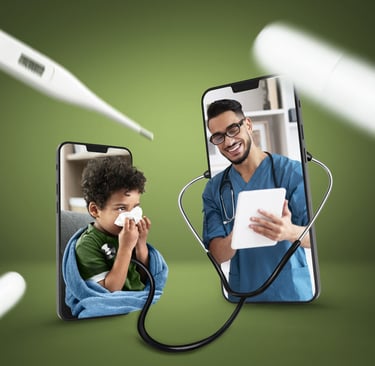Smartphone Apps and Home Healthcare: The Next-Generation Duo
The Rise of the Mobile Health Revolution


Smartphones have transformed our daily lives in ways we could not have imagined just a decade ago. From how we communicate and stay connected to how we consume content, mobile devices have become an indispensable part of the modern experience. It was only natural that this digital disruption would also upend the healthcare industry.
Enter mHealth or mobile health; the use of smartphones, tablets, and wearable devices to support medical and public health practices. Powered by advanced sensors and always-online connectivity, these tools are enabling a new paradigm of decentralized healthcare that shifts treatment beyond clinical settings into patients' homes.
The convenience and cost-effectiveness of mHealth solutions have made them hugely popular among both providers and consumers. According to recent surveys, over 50% of global citizens now use some form of digital health application on a regular basis. As this adoption accelerates, mobile technologies are set to play a defining role in shaping the future of home-based medical care.
Remote Patient Monitoring Goes Mainstream
One of the most promising mHealth applications is remote patient monitoring (RPM). Chronic care management has traditionally required frequent in-person visits to clinics for check-ups involving tests, examinations, and consultations with specialists.
However, RPM leverages the power of smartphones to remotely track vital signs, symptoms, and medication adherence for conditions like diabetes, hypertension, asthma and more. Biometric data from Bluetooth-enabled devices automatically uploads to HIPAA-compliant apps, alerting doctors to any abnormalities.
This allows more efficient chronic disease management from home. For example, heart failure patients can have their weight, blood pressure and oxygen levels monitored daily without traveling to the hospital each time. Early detection of health changes enables timely interventions to prevent exacerbations.
Empowering Independent Living
Mobile apps are also enhancing independent living and quality of life for the elderly population. Features like fall detection, location tracking, medication reminders and emergency call functions give seniors and their families much-needed peace of mind.
"I feel safer knowing I can call my loved ones anytime should I need any help. The app system has really helped me live independently even as I age," says one of our clients, who has been using a senior safety mobile solution for quite a while now.
Caregivers too benefit from tools that streamline tasks like scheduling visits, tracking meal plans and therapy progress. With around-the-clock connectivity, they can address issues promptly without physically checking on clients each time.
Bridging the Access Gap
Perhaps the biggest advantage of smartphone-enabled healthcare is its potential to address inequities in medical access. According to the WHO, nearly half the global population still lacks access to essential services due to issues like geographical isolation or lack of infrastructure and resources.
mHealth goes a long way in bridging this gap. Virtual consultations, diagnostic services and online pharmacies can deliver basic and specialized care to underserved communities at low costs. Telemedicine is also proving a boon for those in rural areas with limited local medical facilities.
The Future is Mobile
As 5G networks and edge computing continue enhancing bandwidth and speed, the scope of mHealth will expand even more. Advanced applications involving Augmented Reality, AI assistants and IoT are poised to transform healthcare delivery.
With further regulatory approvals and insurance coverage, doctors will increasingly prescribe digital therapeutics and wellness programs as part of treatment plans. Meanwhile, consumers are showing greater willingness to self-manage minor ailments using smartphones.
In conclusion, the synergy between mobile technologies and home healthcare holds immense promise to make medical facilities accessible, affordable and patient-centric. By putting treatment literally in people's hands, this dynamic duo is primed to revolutionize the way healthcare is accessed and delivered worldwide.
